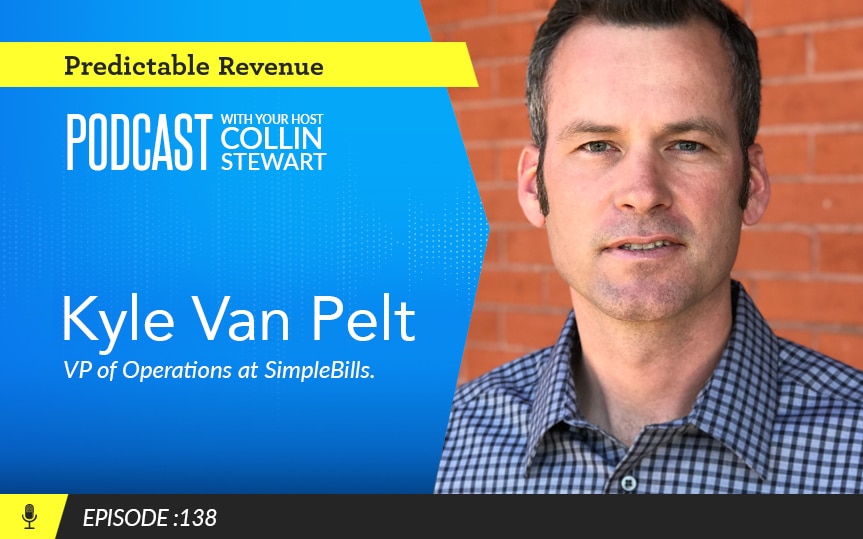How to Build a Great Training Program For Your Sales Team

Training is a funny thing in many organizations: it’s meant to be a critical piece of every new employee’s experience, and a direct reflection for how a company expects to run. Often, though, training feels like a separate experience, a time divorced, somehow, from real work.
This is a problem.
Effective training, of course, should be a real world crash-course in how to execute one’s job. Ultimately, once training is done, that’s precisely what employees are expected to do: execute their jobs.
Marrying training with its operational realities – for example, day-to-day role responsibilities – is the project Kyle Van Pelt, VP of Operations at SimpleBills, is focused on.
To him, training and “work” are one and the same.
“Training has been divorced from real jobs – and that is a huge red flag, they should be aligned. How many times in training have you heard: ‘when you’re actually working, you’ll be doing this.’ So, to me, the question has always been: why am I not just doing it now?” said Van Pelt, on a recent edition of The Predictable Revenue podcast.
“But what if we changed the equation, and training supported all the things we have to do? One of my huge goals in ops, is to keep training and operations together.”
Aligning training and operations
(Editor’s note, we had Bill Bing, CRO at Pendo, on the pod a while back to discuss how to build a world class sales team. You can read about our chat here, or listen to the whole in-depth interview here)
How does one build a training process – one that works across an entire company – while not sacrificing any important tactical or operational information?
According to Van Pelt, it starts with understanding how to impart information in a useful way. For example, information shared as part of a training regimen can be disseminated in different ways – tests or real world scenarios, to name but two examples.
If you’re teaching technical information such as how gas measurements work, you may be able to impart that information via a test. At SimpleBills, for instance, customer service representatives in their call center must have some technical knowledge about utilities. That knowledge, generally speaking, is an exercise in recalling information, so a test works well in this scenario.
But, customer service representatives also have to learn about empathy – a critical piece of dealing with people that need help. Teaching empathy on a test or quiz, however, just doesn’t work. In order impart that foundational piece of the job, you have to teach what empathy is, and how to present it to someone, with real world scenarios and live tickets.
“There are some methods that lend themselves to different pieces in the training. I think it is really easy to write and administer tests – and it is easy to measure. But that isn’t always the best channel. And doing the easy thing can do the issue a disservice, and will negatively impact the learner,” says Van Pelt.
“We’re trying to double the size of our company over the next year. So, how do we train them? It can’t just be clicking through decks, it has to be more nuanced, and the training has to be relevant. You can’t shortcut that process.”
New employee training at SimpleBills
When a new employee comes on at SimpleBills, they begin a rigorous, yet efficient training process.
“You can tell people things all day long, but in the operational environment, things change. Stress arrives. So, we counter that by having new hires spend 1 – 2 days in training environment, then right into an operational environment,” says Van Pelt.
“We want everyone to get into their seats as soon as possible – new hires are working live tickets as soon as they get into that operational environment. Often, training takes a bit less than 2 weeks, but new hires have been working live tickets for 1.5 weeks.”
The SimpleBills training table of contents looks like this:
- Training starts with a look at the history of the company.
- Then, they cover the basics of how they interact with customers, and share how SimpleBills’ goals are aligned with customers.
- Finally, a discussion of how their new role is going to support the goals of the company.
How do you make sure training ethic and philosophies continually get updated?
For both the “in class” and “real world” portion of SimpleBills’ training, custom made documents and visuals are given to each new hire. Varying your training materials is an important aspect of building your training program because different people learn best in different ways. Be sure to have clear documentation and some informative visuals.
Finally, training materials need to be updated from time to time, so make sure your documentation is not falling out of date. Build in a process to re-examine all of your training materials, say, twice a year, to ensure your collateral is staying up to date.
“It’s real simple – your training documentation can’t suck. If you look at your training manual, and there are things to get rid of, take it out. Make sure you are curating the training offerings and processes – re-look at them regularly,” says Van Pelt.
“Training can’t be loaded down with a bunch of things that don’t fit. That’s the bottom line.”
For more on Van Pelt’s thoughts on training – including some tips and tricks from his extensive career with Air Force – check out the rest of his interview on The Predictable Revenue Podcast.
NO TIME TO READ?
Listen On:


